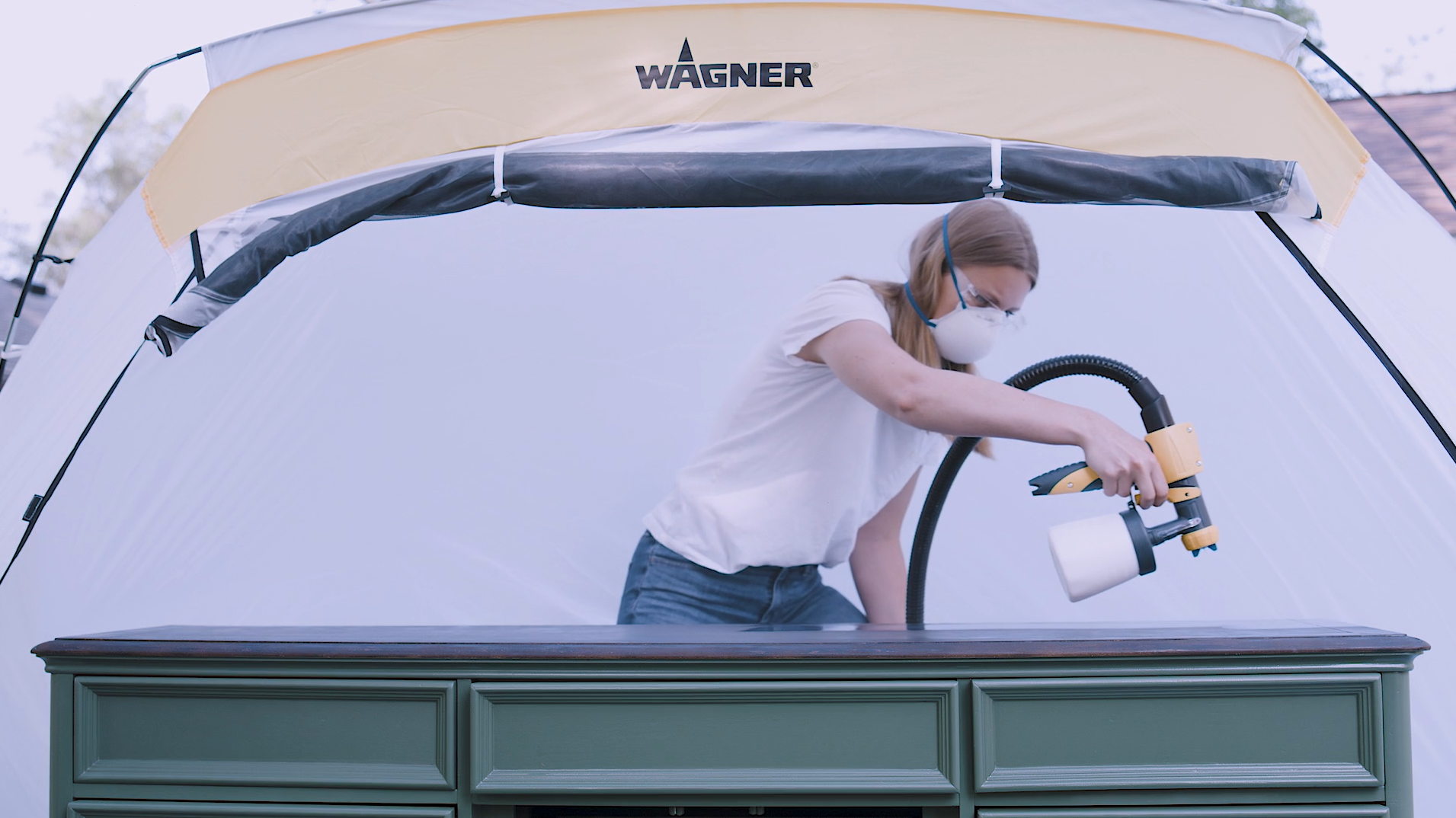Overview
There’s nothing better than a nice, smooth paint finish on your project. Whether you’re painting outdated kitchen cabinets or painting trim in a remodeled room, achieving a buttery smooth surface without any bumps or rough spots is the goal. You can achieve that perfect finish by using a Wagner paint sprayer. It’s important to select the best paint sprayer for your project. If you’re doing fine finishing we would recommend a Wagner FLEXiO paint sprayer with a Detail Finish nozzle. Here are the important factors to consider when painting with the Detail Finish nozzle when painting to get a smooth finish:
Consider the Environment
It’s important to consider the environment in which you’ll be spraying. If you’re painting outside then you should paint on a calm, windless day with temperatures around 70-80 degrees. Refer to the paint can for additional information and guidance on dry time temperatures, which can affect your results. If you’re painting inside make sure to remove or cover anything you don’t want paint on. Even HVLP sprayers have some overspray that you should prepare for.
Your painting environment should also be clean and free of any debris. For example, you don’t want to paint in a dusty interior area where the dust can land on your freshly painted surface and create bumps. You also don’t want bugs or leaves to fall on a fresh coat of paint. Consider using a Wagner Spray Shelter to protect your project and surrounding workspace. If you’re painting indoors then make sure to cover any areas you don’t want painted and make sure the room is well ventilated.

Prep the Surface
Correctly prepping the surface is vital to ensuring that the new coat of paint adheres and dries properly. It’s recommended for raw wood or painted wood surfaces to sand the entire surface beforehand with 150 to 220 grit sandpaper depending on the type of finish. For other surfaces such as metal, a light scuff sanding might be necessary. This will give the surface some “tooth” and something for the paint to stick to. Without sanding, the new coat of paint might peel or cause an orange peel texture.
Once sanded, clean the entire surface and scrub away any leftover dust, debris, or grime. Keep in mind that nothing gets smoother by adding more paint, it only gets smoother by sanding between coats.
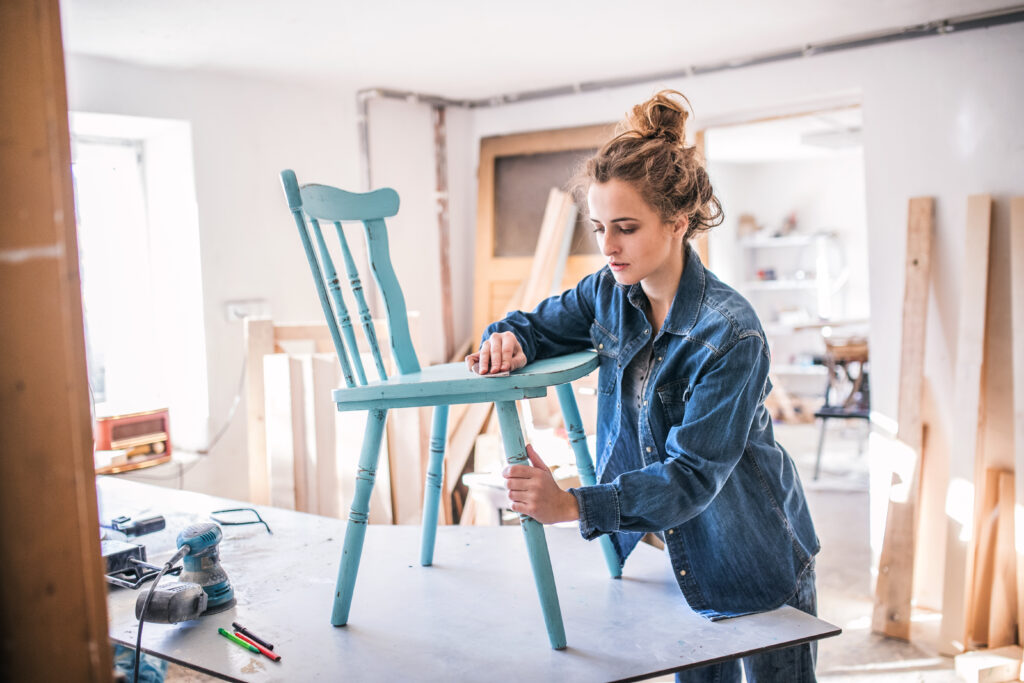
Prep the Material
Make sure when selecting your paint to consider the type of paint you’re purchasing for your project (interior vs. exterior or flat vs. gloss for example), which might affect the durability and life of the new coat.
Once you’ve selected your material and favorite paint color, you will need to prepare the material before adding it to your paint sprayer. Old paint might have debris or clumps (even if it’s an unopened can!) and new paint might need to be stirred. Start by stirring the paint with a stir stick or drill and then pouring it through a mesh filter to remove any debris or clumps that might clog the sprayer.
You may need to thin the paint depending on the thickness of the material and nozzle you’re using. Most Wagner FLEXiO sprayers come with two nozzles: iSpray and Detail Finish. The iSpray nozzle, which is designed for spraying walls and ceilings, can spray most unthinned latex paints. However, if you’re doing fine finishing with the Detail Finish nozzle you’ll need to thin the paint. If the paint is water based then you can thin with water or condition the paint with Wagner Paint Easy. Start by thinning the material with 10% water/Paint Easy and 90% paint. Gradually increase the amount of water or Paint Easy as needed until the paint resembles the consistency of pancake batter. If you’re spraying an oil-based paint then you’ll follow the same steps, but use an oil based paint conditioner or mineral spirits instead of water or PaintEasy.
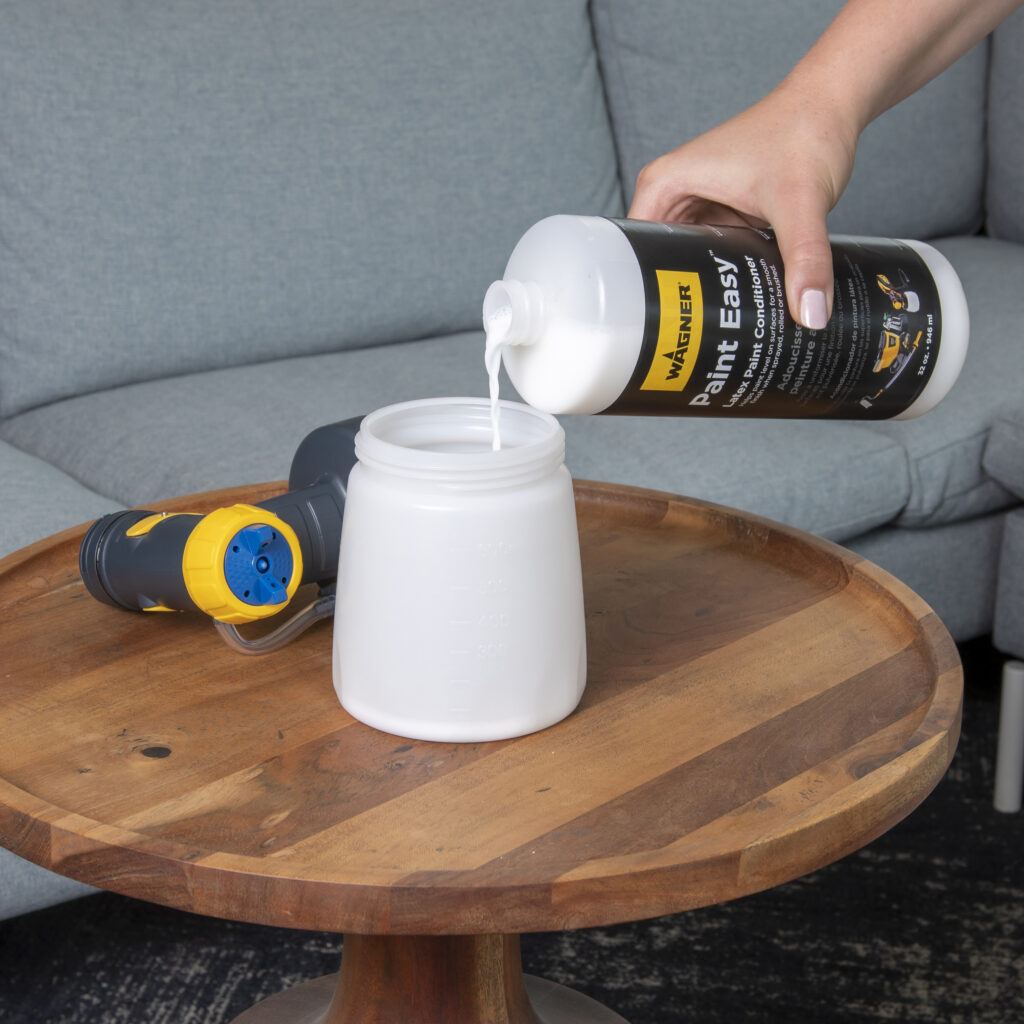
Adjust the Settings
Adjusting the settings on your sprayer is an important step in applying a smooth finish. Wagner FLEXiO sprayers have multiple adjustable settings for spray pattern, material flow, spray width and air flow. Each setting can be changed to fine tune the spray pattern based on the material you’re spraying and project that’s being completed. By increasing or decreasing the settings, you can ensure you’re applying a silky, smooth finish on the surface of your project. You’ll know the settings are correct when the paint droplets are uniform, equally sized and equally spaced with consistent coverage.
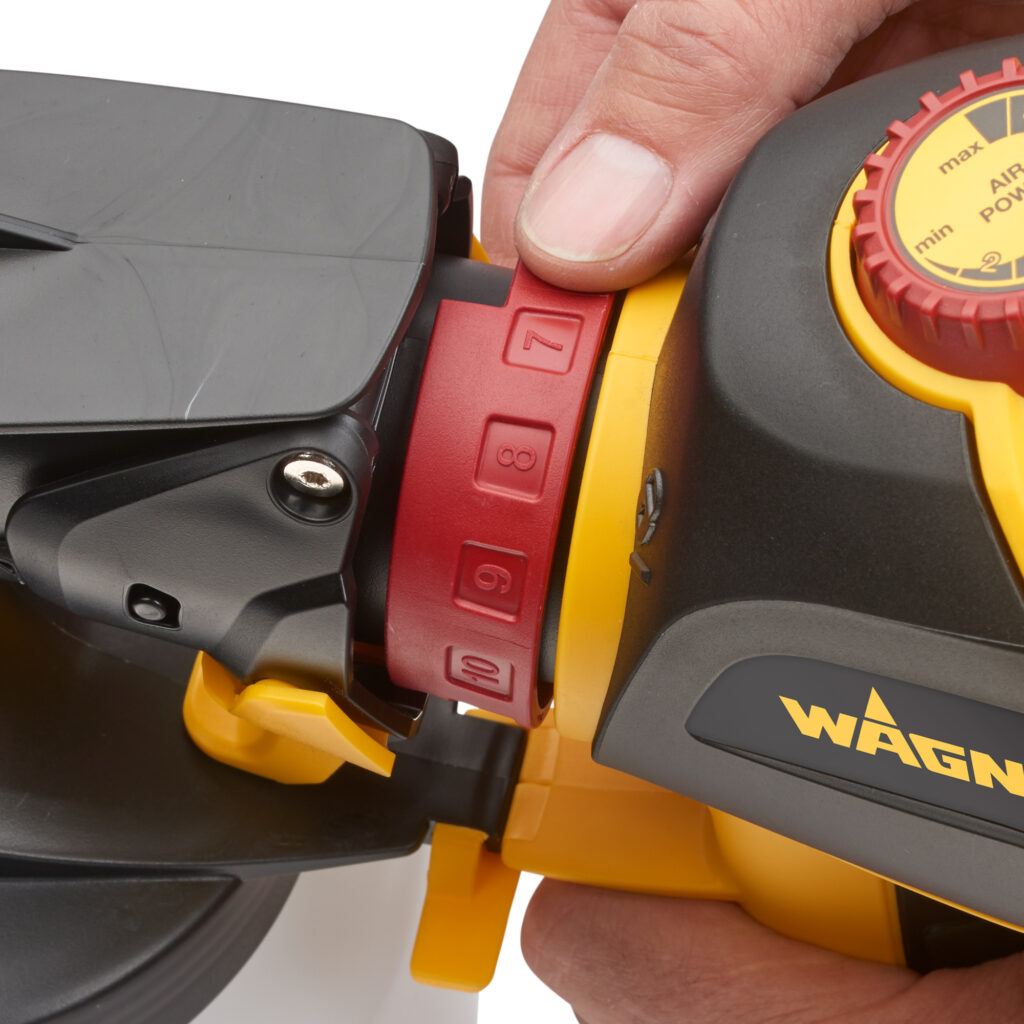
Apply the Right Amount
It’s important to apply a complete coat with each pass. That means going slow enough that all the droplets are touching each other (overlapping the passes by 50%), but not so slow as to create a puddle, runs and sags. Laying the project down and spraying down onto it is easier to get a nice finish, rather than standing up the project vertically. If standing vertically, gravity might pull the paint down and create runs or drips. When laying flat, the paint has nowhere to go, which will allow the material to spread and level. Applying too light a coat does not allow the finish to spread and level and the result is tiny orange peel, sandpaper-like texture. Applying a coat that’s too thick might cause pooling and affect the dry time. Therefore, always try to apply a coat of paint that offers complete coverage, but isn’t too light or too heavy.
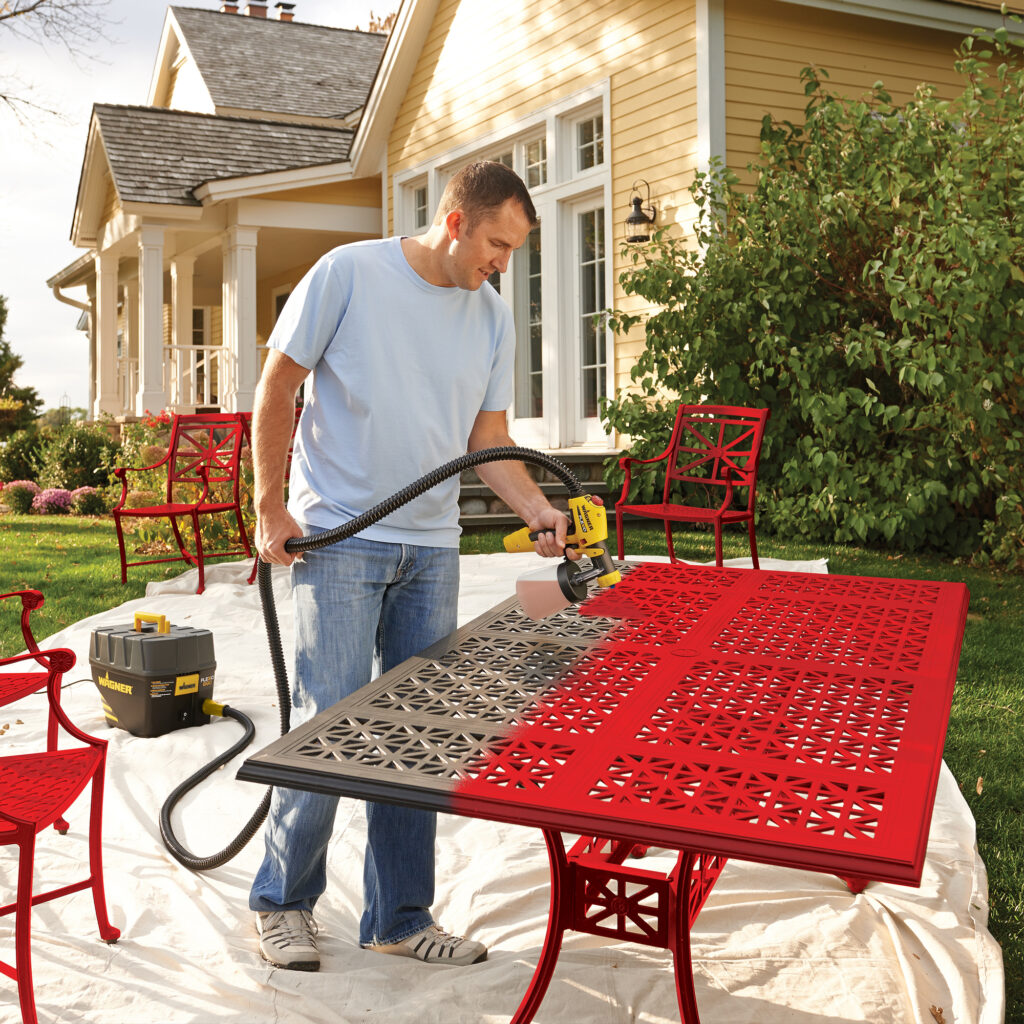
Allow for Dry Time
Finally, allow for the new coat of paint to properly dry before touching the surface or applying another coat. Some projects such as painting kitchen cabinets or raw wood on a furniture piece will require multiple coats of paint. Always refer to the paint can’s instructions for recoat time (generally 3-6 hours) before applying a second or third coat of paint. Dry time is important because if you recoat before the recommended time, the finish might become texturized and bumpy.
Most paint will require a minimum of 15-30 days to fully cure and become scratch resistant. If you touch or move the surface before it’s fully cured then you might scratch, smudge, or ruin the finish. After that time has passed, you can display your completed painted project (whether it be furniture, cabinets, or décor) in your home!
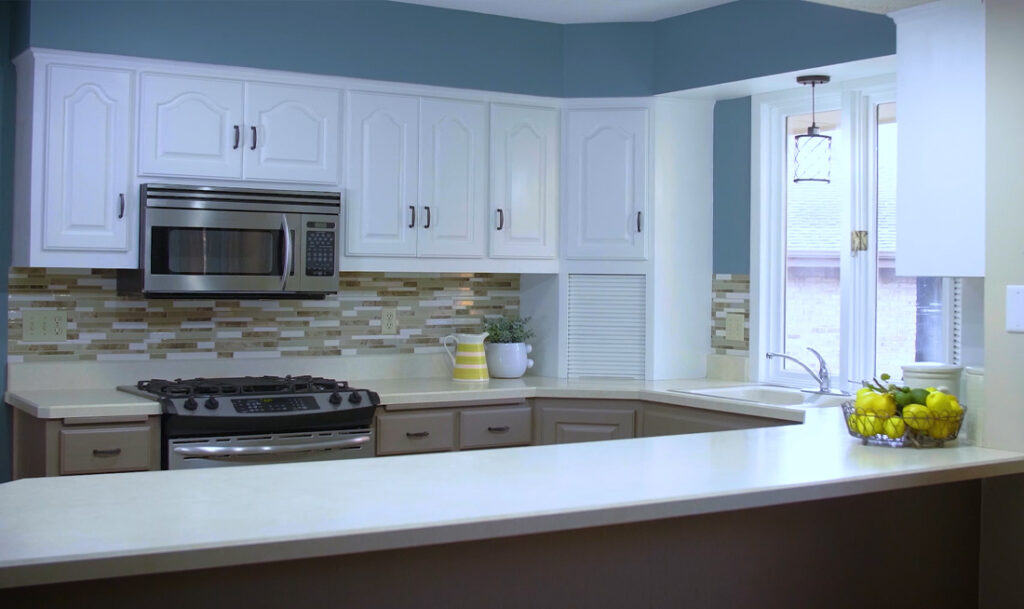
We hope these tips and tricks were helpful in achieving a smooth finish on your project! If you have any additional questions, please call our U.S based product support team at 1-800-328-8251 or use the virtual assistant tool on our website (www.wagnerspraytech.com). Happy painting!
